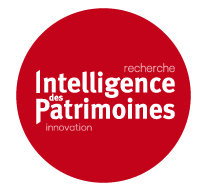PresentationTRAIL 2016 will take place in National Domain of Chambord (Loir-et-Cher, France) from 17th to 20th May 2016. This international meeting builds on two previous meetings (TRAIL 2011 and 2014), and will be devoted to the study of LiDAR (Light Detection and Ranging) applications in archaeology, with a special focus on projects in in forests and woodlands. They are organized as part of SOLiDAR regional project (coord. X. Rodier and C. Laplaige, UMR 7324 CITERES-LAT (Université François-Rabelais de Tours/CNRS), which is part of the interdisciplinary programme of research and innovation Intelligence des Patrimoines, the LEA ModeLTER and in partnership with the Domaine national de Chambord, the DRAC Centre-Val de Loire, the ISA network, the european network Archeolandscape and RTR Image. The conference will bring together specialists in exploration and processing of LiDAR data, archaeologists, biologists, physicists and forest management experts to present the latest methodological advances and discuss different ways of understanding and integrating the results of LiDAR surveys. The meeting will include both plenary sessions and workshops, and emphasizes promoting exchanges between different specialisms. This year key themes are:
About LiDAR: Lidar elevation models have multiplied over the past five years, delivering an unprecedented amount of original archaeological finds in the forest. These findings correspond to habitat structures or farming before the existence of forest cover but also archaeological micro-structures directly linked to past forest economy, unknown until now. Beyond the elevation models, data obtained by Lidar surveys provide useful information in agroforestry. They can thus be an indirect indicator of the consequences of human impact in the long term (from the origins to the present day) on current stands. In Europe, the mass of data produced by archaeological research teams and heritage institutions (Ministry of Culture, English Heritage ...) needs to be confronted and homogenized. A summary of the last workshop is available by clicking on the following link: |


